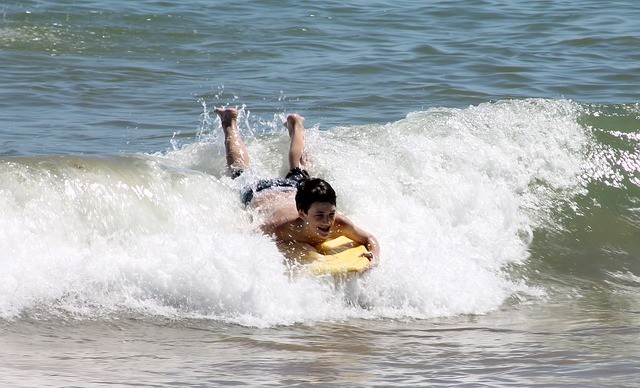Bodyboarding Safety

Bodyboarding is one of the fastest growing and most accessible surf sports. It’s a great fun way to enjoy the waves, but can be dangerous if you’re not properly prepared.
Understand the risks and bodyboard safely
British and Irish waters are incredibly unpredictable and one of the biggest dangers with bodyboarding is surfing outside of the red and yellow flag lifeguarded area, outside of lifeguard hours. There are different safety precautions for bodyboarding compared to other activities such as surfing and windsurfing.
RNLI lifeboat crews launched 18 times to bodyboarders in trouble in 2016. In addition, RNLI lifeguards went to the rescue in 883 bodyboarding related incidents. Over half of these incidents involved people caught in rip currents.

Taking some simple steps to stay safe will reduce your chances of getting into trouble and help you get the most out of the sport you love.
Seven simple checks for safe bodyboarding
- Always bodyboard between the red and yellow flags. It’s easy to be caught out in the sea.
- Wear your leash and hold onto your board if you get into trouble – it will help you float.
- Bodyboard with a mate, especially in big swell. Look out for one another.
- Remember to check your equipment for damage before use.
- Check the local forecast for wind, tide and swell. Don’t go on the water in conditions above your capability.
- Consider other water users.
- Follow safety advice from the lifeguards and the United Kingdom Body-boarding Association.












